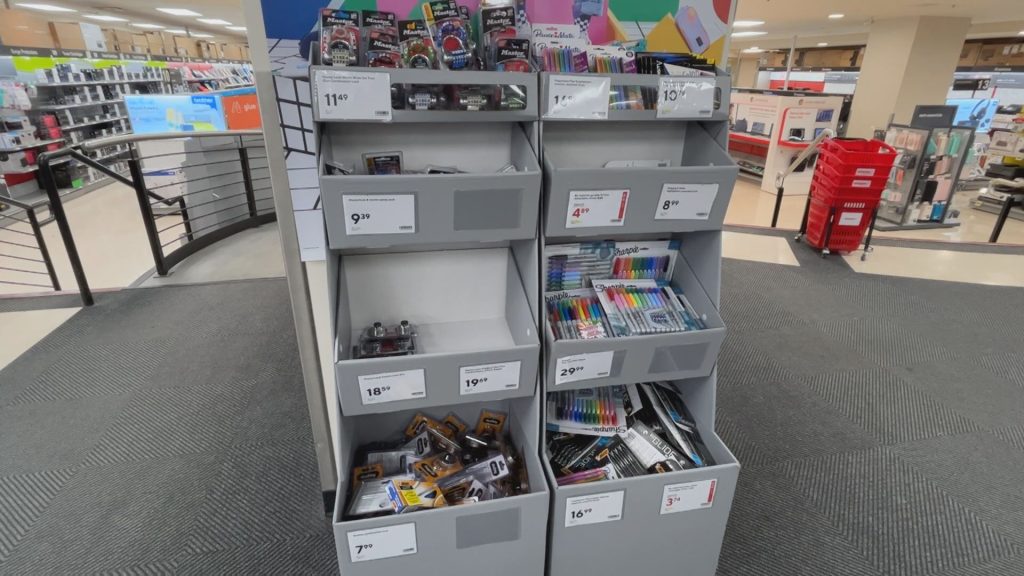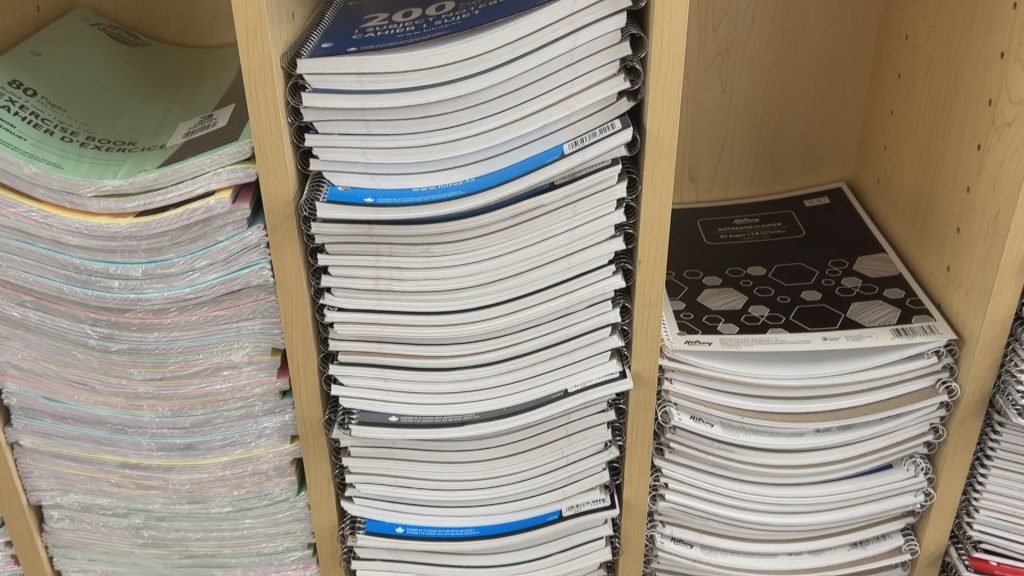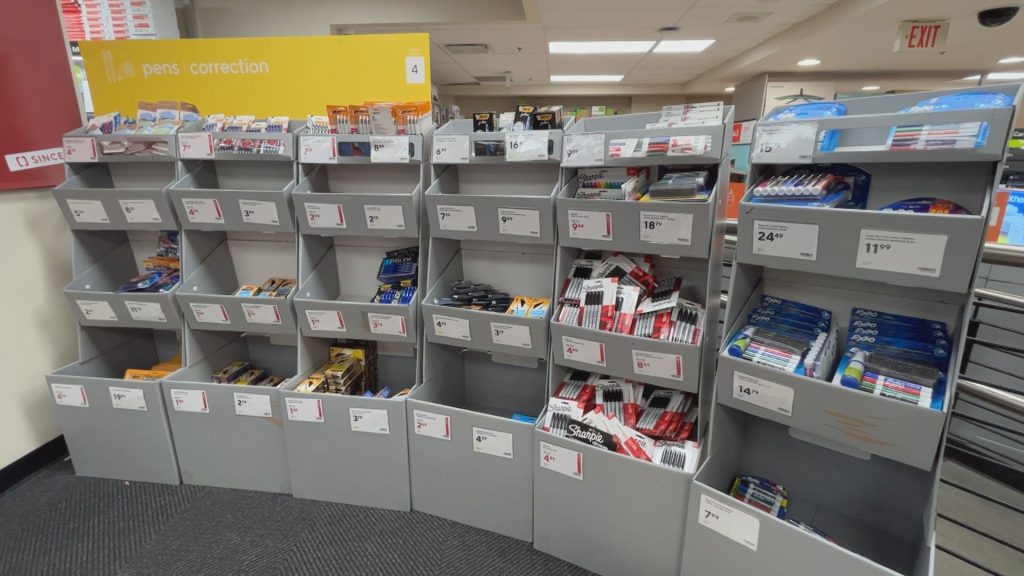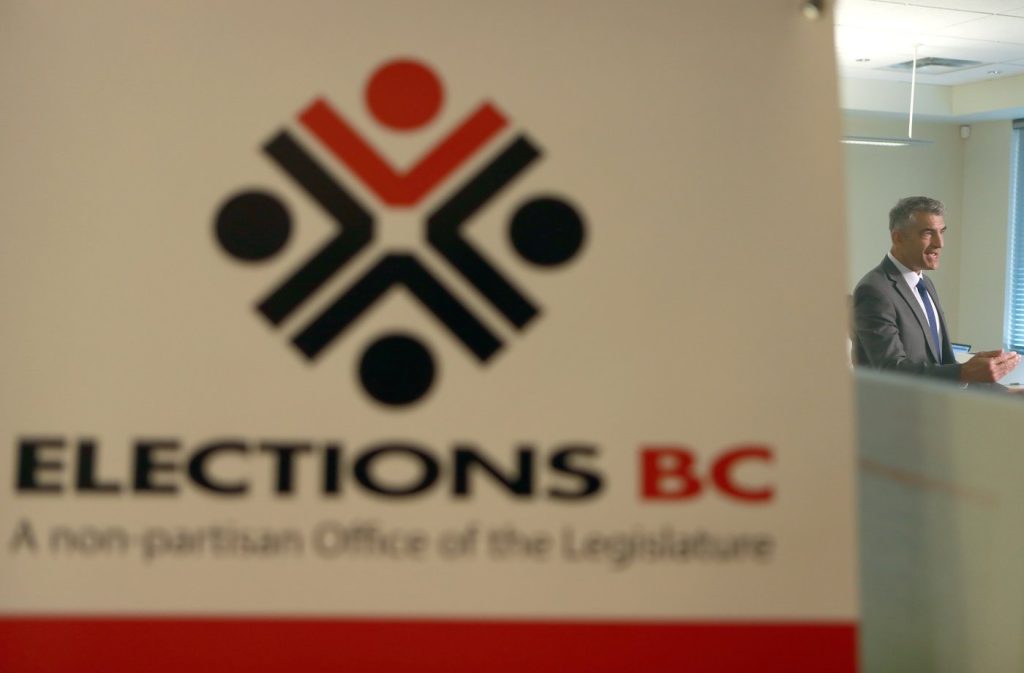Shoppers hit by back-to-school inflation, but expert says not all prices are up
Posted August 29, 2023 7:31 am.
Last Updated August 29, 2023 10:47 pm.
Back-to-school shoppers are fighting to find deals right now as inflation pushes up the price of things like notebooks, backpacks, and many other classroom essentials. But not everything is more expensive this year.
“There are some reports coming out that ‘back to school’ is up anywhere from 27 to 30 per cent,” said retail consultant David Ian Gray with DIG360 in Vancouver.
“But I don’t buy that across the board because for things like electronics, which are a key part of the school year, there’s actually deflation in that category. Different devices for the same quality a year ago are down a little bit.”



Gray says how much more or less families are spending on back-to-school shopping depends on what is on their lists.
“If it’s about the notebooks, binders, backpacks, and those sorts of things, yeah, they are up. Electronics, which tend to be the bigger ticket items, you’re not seeing inflation there at all,” he explained.
He also points to price cuts for clothing and footwear in reaction to a North American glut of apparel — excess inventory after pandemic delays — that retailers are still trying to push through stores.
“The one exception being that if there’s a very hot, must-have item for young people, it’s probably more expensive this year than a year ago. But for the rest, they need to move the product and you are going to be seeing a lot of slashing. For the parents out there, it’s really about keeping an eye out for who’s got what on sale. There will be a lot of sales this fall for apparel,” Gray said.
However, keeping tabs on late-summer deals may take a little more work than it used to as retailers cut back on advertising.
“I think there’s a general trend where there’s a much deeper reliance on consumers who subscribe to newsletters or have email subscriptions to brands. There’s been a big pullback on advertising spending because of the economic conditions in the industry. They are cutting costs but there are other areas where they are getting the word out.”
If you are used to seeing back-to-school flyers and digital or broadcast ads, Gray says you’ve probably noticed less marketing this year.
“It’s not that they are not having deals, but they are now coming at you though your social media and your subscribed email lists,” he explained.
Gray says back-to-school has become the second-most-important time of year for retail companies, and they are still fighting for consumer dollars.
“They are now under so much duress that they are really focused on major selling seasons. We know about Black Friday and the holidays, but back-to-school is arguably for many the second biggest. They plan for this well in advance and it’s a very critical time,” he told CityNews.
Related articles:
-
ICBC shares tips to keep kids safe when going back to school
-
Group of B.C. doctors, nurses, scientists push government to ensure safe school return
-
B.C. preparing for fall COVID boosters, return to school
Gray adds the season is a bellwether for consumer behaviour through the second half of the year, with concerns that shoppers are “tightening their wallets right now.”
“Not all consumers are identical. What’s happened after the pandemic is we’ve seen a growing gap between ‘have’ and ‘have not,'” he explained. “For the middle- and lower-income families, there are many that under duress right now as higher interest rates have really started to take root. For them, even if there’s no price inflation for back to school, the fact you have to get clothing for growing kids, it’s taking a chunk out of the household budget that is really getting tighter and tighter.”
He says that is one reason used and second-hand buying continues to take off.
“Thrifting, for example has become cool and normal and there’s no stigma anymore. One of the areas we are seeing underrated is the second-hand market — it could be Facebook Marketplace, it could be thrift shops — especially for on-brand items the kids feel they need to be socially accepted at school. It’s an option that has become far more normal than it was decade ago.”








